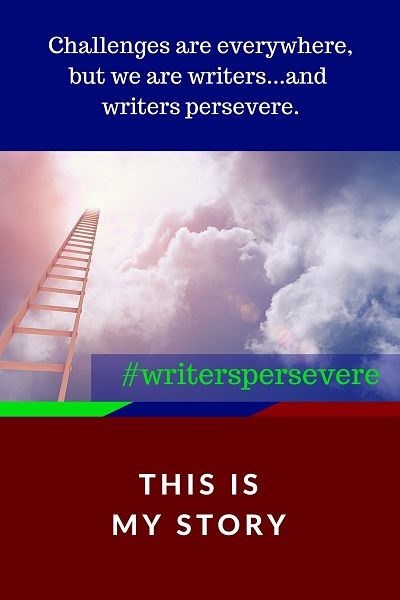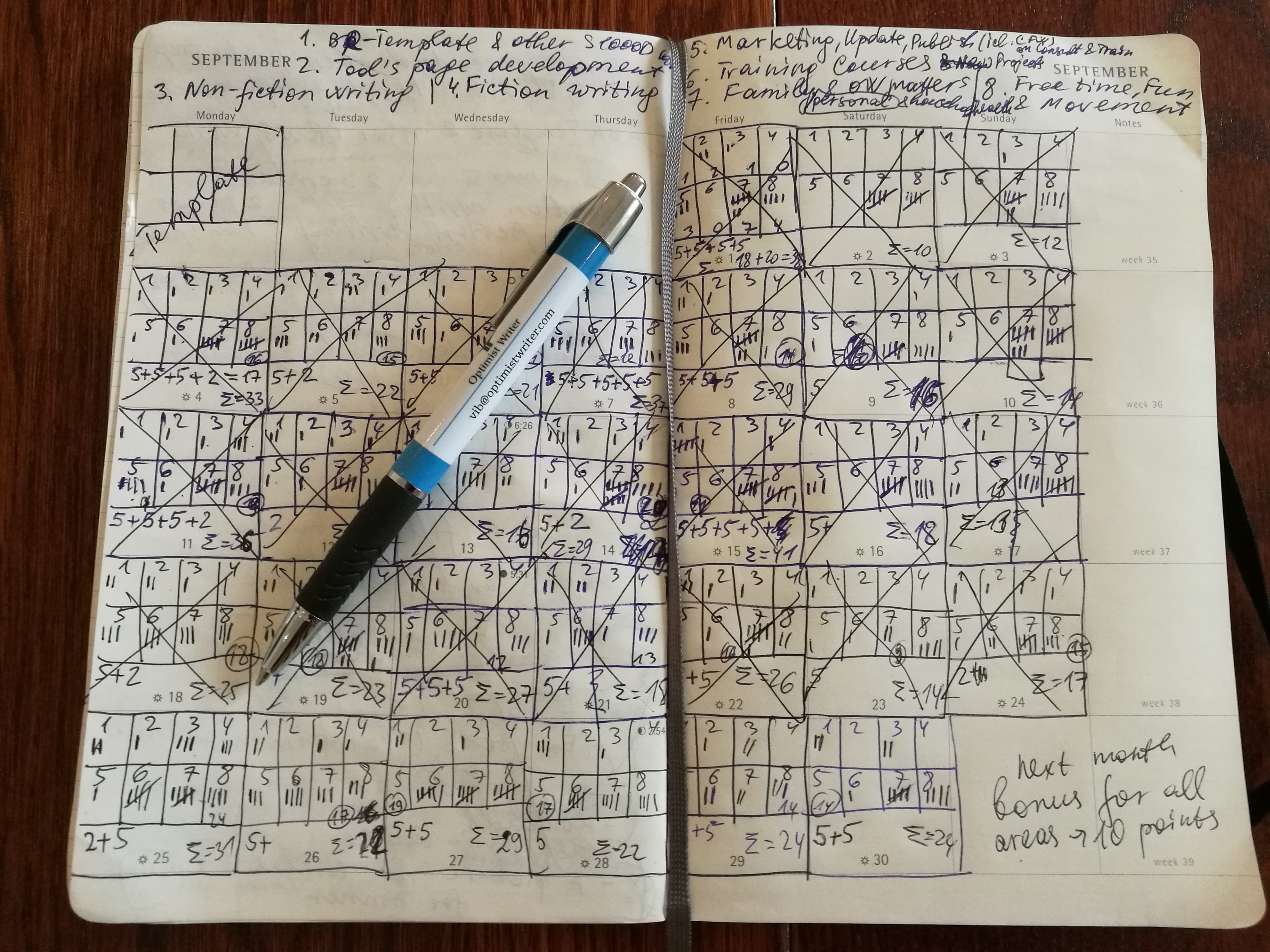
Many aspiring writers hear that writing is a hard job. And surely, writing a book is not a day-long assignment. It takes weeks, months, or even years.
On the other hand, many people say they want to write a book but don’t have time for it.
So, what to do?
I started writing my very first book in June 2013. I wrote a few chapters, then shared them with a friend and my niece. They loved what they read. But then I stopped writing the story. Reasons for it were plenty and all the known ones. Full-time job, a family with a small child, voluntary work, the story being too sad, and too slow, not good enough, etc. etc.
Joining a writing course with the best-selling author Menna van Praag helped to boost my writing energy again. Every month for about a year I have sent her three pages of my writing and then got both a written feedback and from her directly, during a one-hour telephone seminar together with her other students.
After a few months of this course, and especially between the phone calls my writing energy ebbed again.
Together with my fellow students, I complained to Menna that I couldn’t find time to write my book or to write in general.
Menna suggested playing a game. She proposed that each of us writes for 5 minutes a day for a month and share our experiences in the Facebook group created by one of the students.
It was a fantastic experience. We cheered each other through the process, and my writing just flew. Yes, sometimes 5 minutes or less, but it progressed.
In the subsequent months, I have forgotten about the game, but I continued writing.
In 2015, I had two small children, and I managed to finish my first book, to revise it, to have it professionally edited, and published it. Doing all that in small steps between taking care of an infant, keeping a household, blogging and taking care of my family.
At the end of that year, I published another book. Shortly before that, I joined a writers’ club in Aalborg, Denmark, where I live. At that time, I was already working on several writing projects in parallel, continuing the voluntary work in a technical community, and started a business. My fellow writers in the writers’ club asked me how I managed to pursue so many projects in parallel, along with taking care of a family with two small children.
As I was contemplating how to summarize and how to explain what I did, I recalled the game introduced to me by Menna. I suggested to my friends to play it. I organized a Facebook Group called “Procrastination Breakers Club” where we would play that game with rounds going for one month.
The rules of the game were straightforward. We had to introduce the project we wanted to take into the game (it didn’t have to be writing; learning a language or rebuilding a house, or anything else that we wanted to do but didn’t see to find time to, would do as well). Then we had to pursue the project for at least 5 minutes a day. If we did it, we earned a point. If we didn’t, then we lost the point to our procrastinating selves. And if we persevered for less than 5 minutes, we got half a point.
By the end of the month, we scored the points, and as writers, we also counted the words we had written during that month.
And that first round of the game that I moderated was one of the most significant revelations in my life as a writer. In that month I have written more than six thousands words, by writing for five minutes a day, sometimes more (but never longer than twenty minutes) and sometimes less. Six thousand! If I continued to write the book at the same pace, I would have a full manuscript within a year. By writing just for about 5 minutes a day!
That was one of the most beautiful discoveries for me as a writer.
And something else marvelous happened. During one of the rounds of our game, another writer friend wrote me a personal message on Facebook. She told me that a sentence I often like quoting and which I mentioned at the writers’ panel we both attended helped her to break her writer’s block. She was late with sending a book manuscript to her publisher and seemed not to manage to get it done. The sentence she referred to was, “You can’t edit an empty page.”
I was delighted when she shared this experience with me and invited her to play the 5 Minute Perseverance Game. She accepted the invitation.
She commented on the page of our group that the game was helping her, and she expressed her surprise with much color and enthusiasm. Sometime later, she posted a message with multiple exclamation marks and a few strong words announcing that she finished the manuscript and sent it to the publisher.
This author’s name is Sasha Christensen, and she is an award-winning Young Adult fantasy author in Denmark. She allowed me to quote her and put the image of the cover of the book, which she took into our game, onto my website. She wrote to me, “This is the one you helped break my block on, btw ;).”
Seeing such an effect of the game and especially the fun of it, I have dedicated a little book to it which I named “5 Minute Perseverance Game: Play Daily for a Month and Become the Ultimate Procrastination Breaker” and structured as if it was a description of a board game.
Sometime after publishing this book and while sharing the game with many people I know and meet, a friend told me, “Oh, there is a well-known term for what you do. It’s called gamification. We learned about it in college.”
Gamification? Of course, I started researching about it. Apparently, this is a method of bringing games and game-design approach into other areas of our lives, like work for example.
A little later, I have heard of kaizen, philosophy, and technique of pursuing and achieving big goals by making small steps and solving small problems. Or in other words by breaking down substantial challenges into smaller ones, with which our brains don’t have obstacles to overcome.
So, this is what I was doing with my 5 Minute Perseverance Game: I gamified my life, and I applied kaizen. In other words, I made progress in my projects by making tiny steps and by gathering points.
I designed my game anew at the beginning of every month varying the number of points, adding a bonus system and taking various projects and activities into the game. And then I discovered something else: this project game design I was doing once a month and enjoying so much, it was nothing else than time and project management, and…it was fun!
I always thought that I hated time management, jotting down to-do lists, making priority lists, and recording progress. Now I measure progress in points and am eager to gather more. If the steps are too big and overwhelming, I make them small and start smiling broadly, when I record a score for each of them.
My life became a fun game, including the writing part of it.
A note: This post was written upon a call-out from Angela Ackerman and Becca Puglisi on their award-winning blog and website “Writers Helping Writers,” in frames of the launch their new Thesaurus for Writers. This book is “The Emotional Wound Thesaurus: A Writer’s Guide to Emotional Trauma.”
As part of the book launch celebration, Angela and Becca invited writers to encourage each other to persevere and share their stories of strength and perseverance under the hashtag #WritersPersevere. This event includes some amazing giveaways! Check out more here. You can only enter until tomorrow, October 27th, so hurry up if you would like to join.





